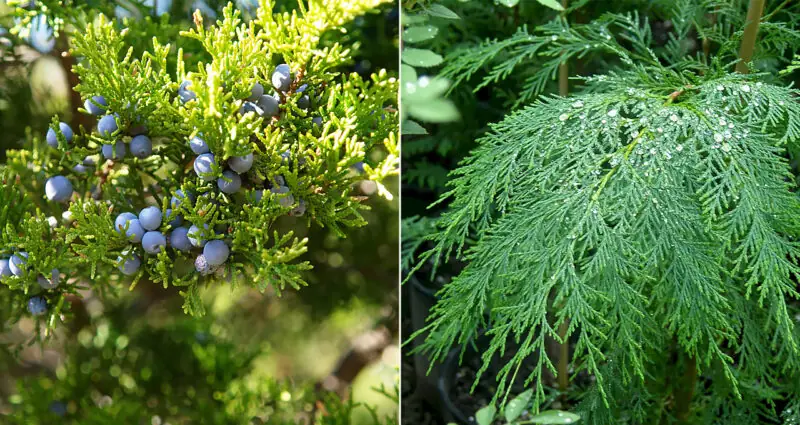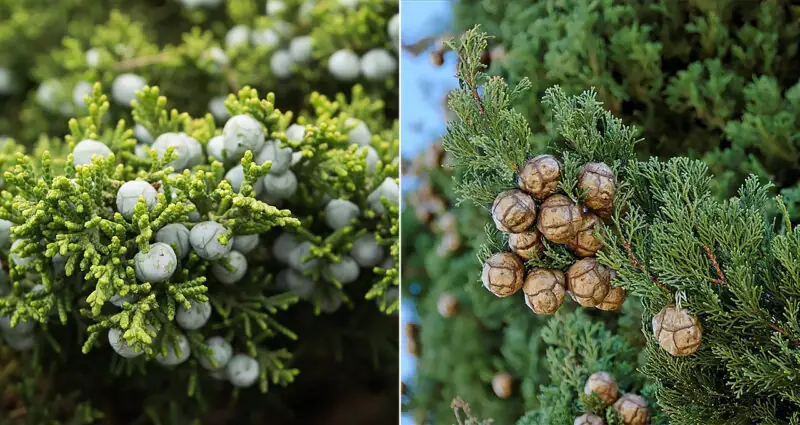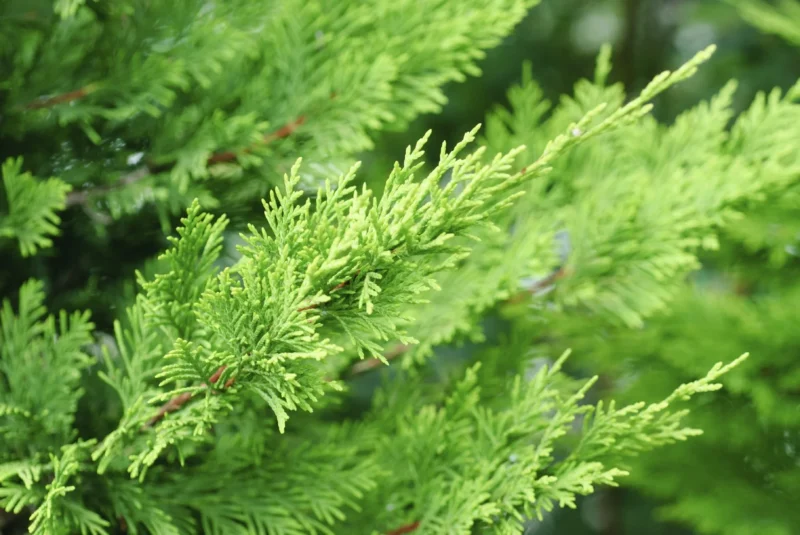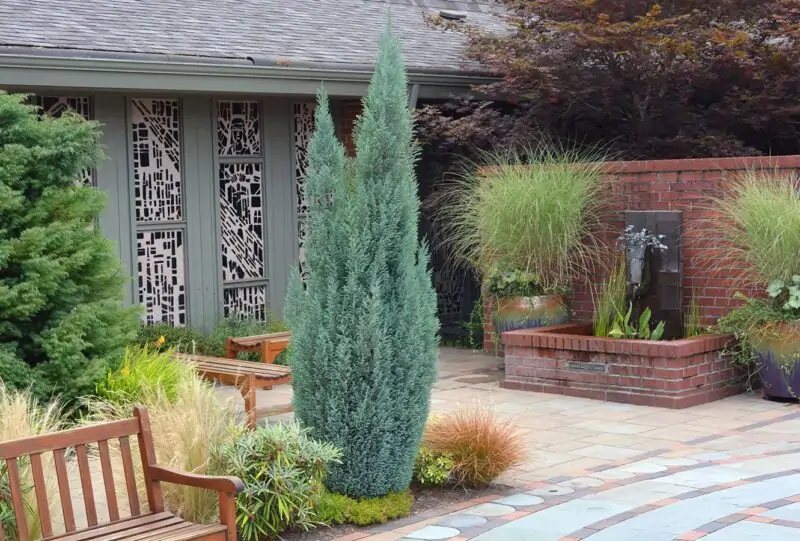Juniper vs Cypress: Similarities and Differences

Warning: Undefined property: stdClass::$error in /sites/makeoveridea.com/wp-content/themes/theissue/inc/misc.php on line 71
Overview
Before we explore the differences between these two plants, let’s take a closer look at each one individually.
Defining Juniper
Junipers belong to the genus Juniperus within the family Cupressaceae. They are evergreen coniferous trees or shrubs with needle-like leaves arranged in whorls around branches. There are over 50 different species of junipers found throughout North America, Asia, Europe, and Africa.
Defining Cypress
Cypresses also belong to Cupressaceae, but they have separate genera such as Taxodium, Pseudotsuga, and Chamaecyparis. Cupressus sempervirens is another common type. They typically grow taller than most other types, like Italian Cyprus. They’re also evergreens with scale-like leaves instead of needles.
Similarities Between Juniper and Cypress
Despite being distinct from each other, there are enough similarities between them too. These include:
Appearance
Both plants offer stunning foliage year-round thanks to their dense structure. Therefore, both will give excellent privacy fences. Their foliage ranges from bluish-green (junipers) to yellowish-green (cypresses). They’re very similar in appearance, but slight differences can be obvious if viewed closely.
Landscape Use
Both species serve well as ornamental garden plants because they thrive best under minimal maintenance. They are also used in foundation planting, mixed borders, hedges, bonsai culture, parks, cemeteries, and other urban areas. Are you looking for the perfect tree or shrub to add to your landscape? Look no further than juniper and cypress trees! Both of these plant species are popular choices for their hardy nature, unique appearances, and versatility in various environments. In this article, we’ll dive into the details of Juniper vs Cypress so you can make an informed decision about which one is right for your needs.
Juniper vs Cypress
Now that we’ve learned the basics about junipers and cypresses, let’s dive into some details on how they differ from each other.
Leaf Shape and Structure
Juniper needles are sharply pointed, while cypress scale-like leaves are more blunt. The color of the leaf varies depending on the species but is usually bluish-green for junipers and yellowish-green or gray for varieties of cypress. Many people prefer the look of blue-tinged foliage, which is why most gardeners will go with one type over another. Cypress trees tend to have a softer appearance, while junipers appear spiky due to their needle structure.
Growth Habit And Size
Cypresses generally grow taller than junipers. Although both plants can be pruned heavily if desired, cypresses may take a longer period before they fill up again. Junipers offer different shapes like round, mound, vase-form, or low-growing ground covers. Copenhaver (a variety) grows flat like a carpet, which makes them perfect as borders around gardens.
Soil Requirements
Both plants require well-draining soil conditions. However, juniper prefers soils with high pH levels, whereas cypresses thrive best in acidic soils. A wilt disease known as Phytophthora root rot affects these two species when subjected to poorly drained soil types. This calls for an important factor: planning should be done based on site analysis results.
Pruning And Maintenance
Both plant species don’t need frequent pruning unless you want them maintained at specific sizes. Trimming could also reduce the spread of diseases. Annual shearing might not work well since it invites pests. Instead, cut selected branches selectively, the way nature does it. Pruning should always happen during dormant seasons, with spring being preferred. Unwanted branches located near the main stem must be trimmed close enough without leaving any stubs behind. This encourages growth towards the inside rather than outwardly.
Fruit and Scale

Junipers bear berry-like cones, while cypresses produce small rounded fruits known as arils or nutlets. Both of them are edible, but the juniper berries have a stronger flavor compared to those from cypress.
Disease Resistance
Both species can be affected by many pests like spider mites, bagworms, scale insects, or winter moth caterpillars. Cankers, root rot, needle blight, brown spot, dieback on branch tips, and cedar apple rust also compromise their health. The good news is that both plants usually bounce back easily when their root systems remain healthy. Otherwise, you might need disease-resistant varieties if planning for a large-scale landscape project.
Leyland Cypress: A Popular Hybrid

Leyland cypress was bred in the United Kingdom during the 19th century as a hybrid between Monterey Cyprus (a Cupressus species) and Nootka false cypress (a Chamaecyparis). They’re fast-growing trees with exceptionally dense foliage, which makes them an excellent privacy fence option. Well-pruned Leylands look great even up close, unlike other “green wall” options. However, Leylands do not produce pine cones since they’ve lost this ability after hybridization.
Trending Comparisons
Let’s take a closer look at some trending comparisons involving junipers and cypresses:
Cypress vs Juniper in Landscape Design
While both plants offer similar appearances, cypresses tend to be used more frequently than junipers. This may be due to their taller structure, which gives additional height required for hedging purposes. Taller structures also serve well around large buildings where there’s enough space.
Juniper vs Cypress in Bonsai Culture
Bonsai culture enthusiasts prefer using dwarf varieties of shrubs, such as sea green, Kalispell, Mint Julep, Ozark beauty, among others because they respond well under pruning cultures. They also have a unique appearance when compared to other types of bonsai.

FAQs
When it comes to selecting the right plant species for your landscape, it’s important to look at characteristics that could best suit your needs. This may involve conducting soil analysis, site surveys, climate studies, and most importantly, your personal preferences. Choose what pleases you since each one has both similarities as well as differences.
Cedar apple rust, bagworms, canker, dieback on branch tips, or needle blight, among others. Treating these problems will require expert services from an arborist in order to safeguard their health.
Pruning should always be done during dormant seasons, like spring, when plants have not started growing. This helps reduce stress levels under tree systems.
Conclusion
Junipers vs Cypresses – which one wins? Well, the answer depends on site requirements, personal preferences, and desired uses. These two evergreens offer similar appearances with slight distinctions. With proper care management practices, either option can thrive beautifully in almost any environment.